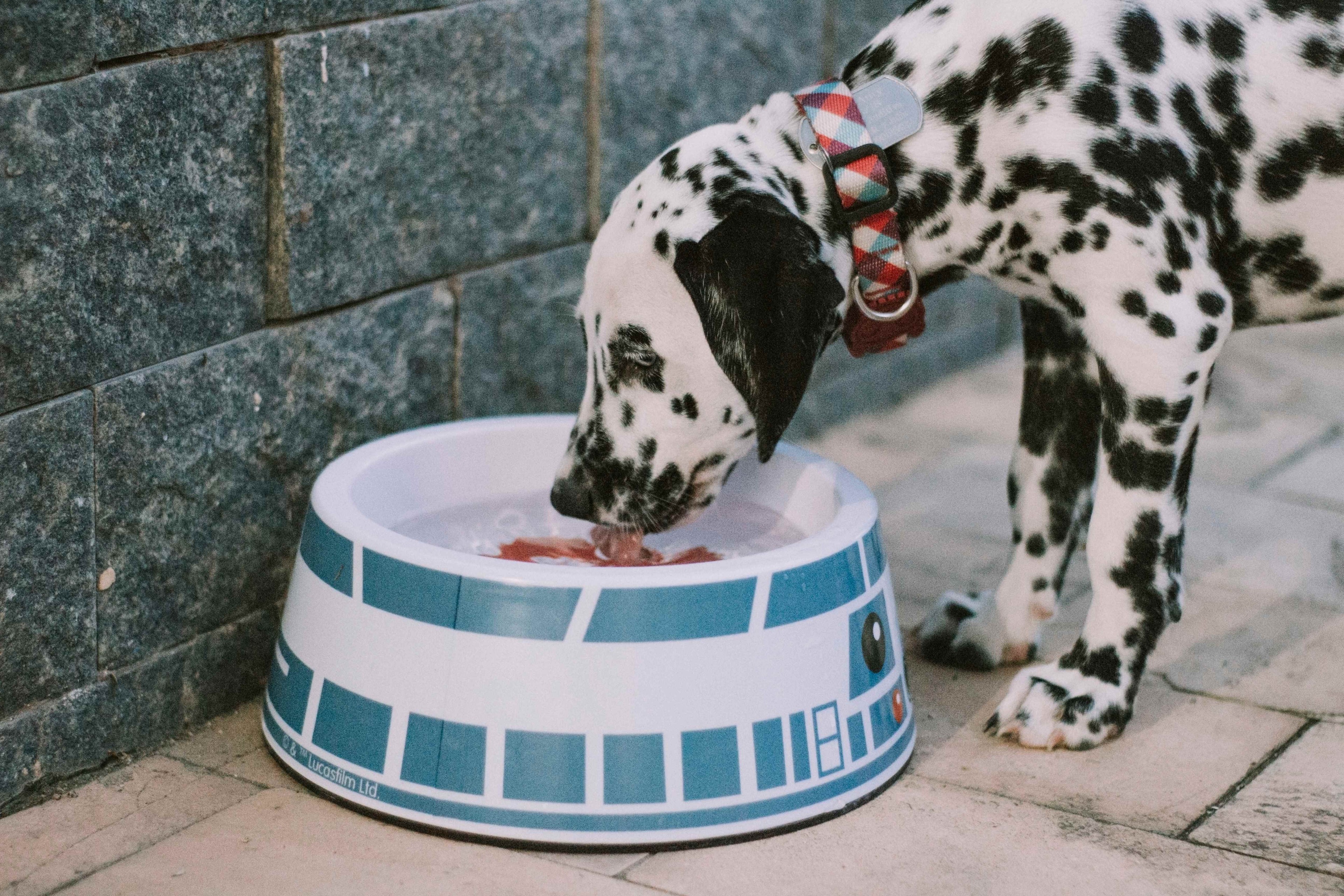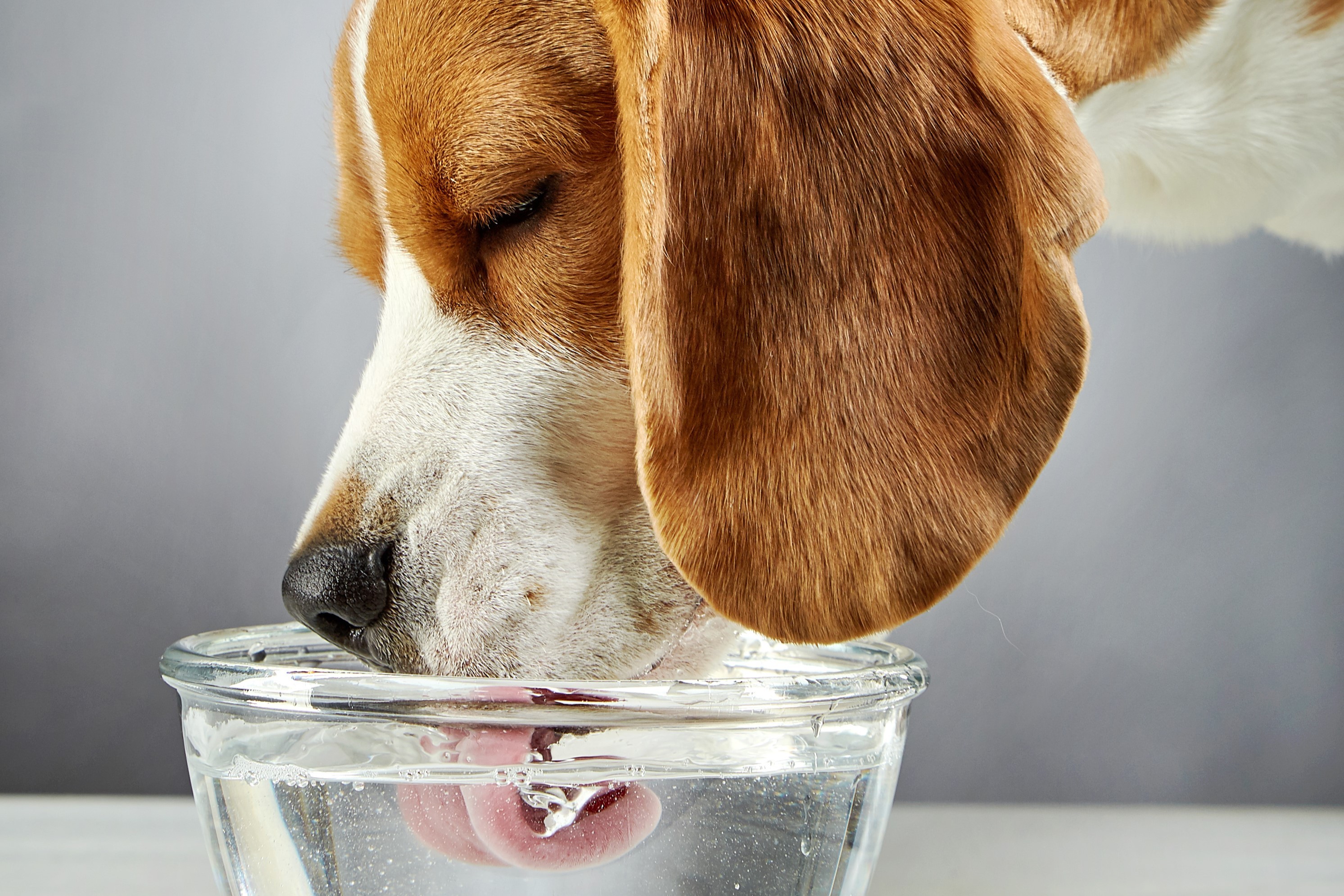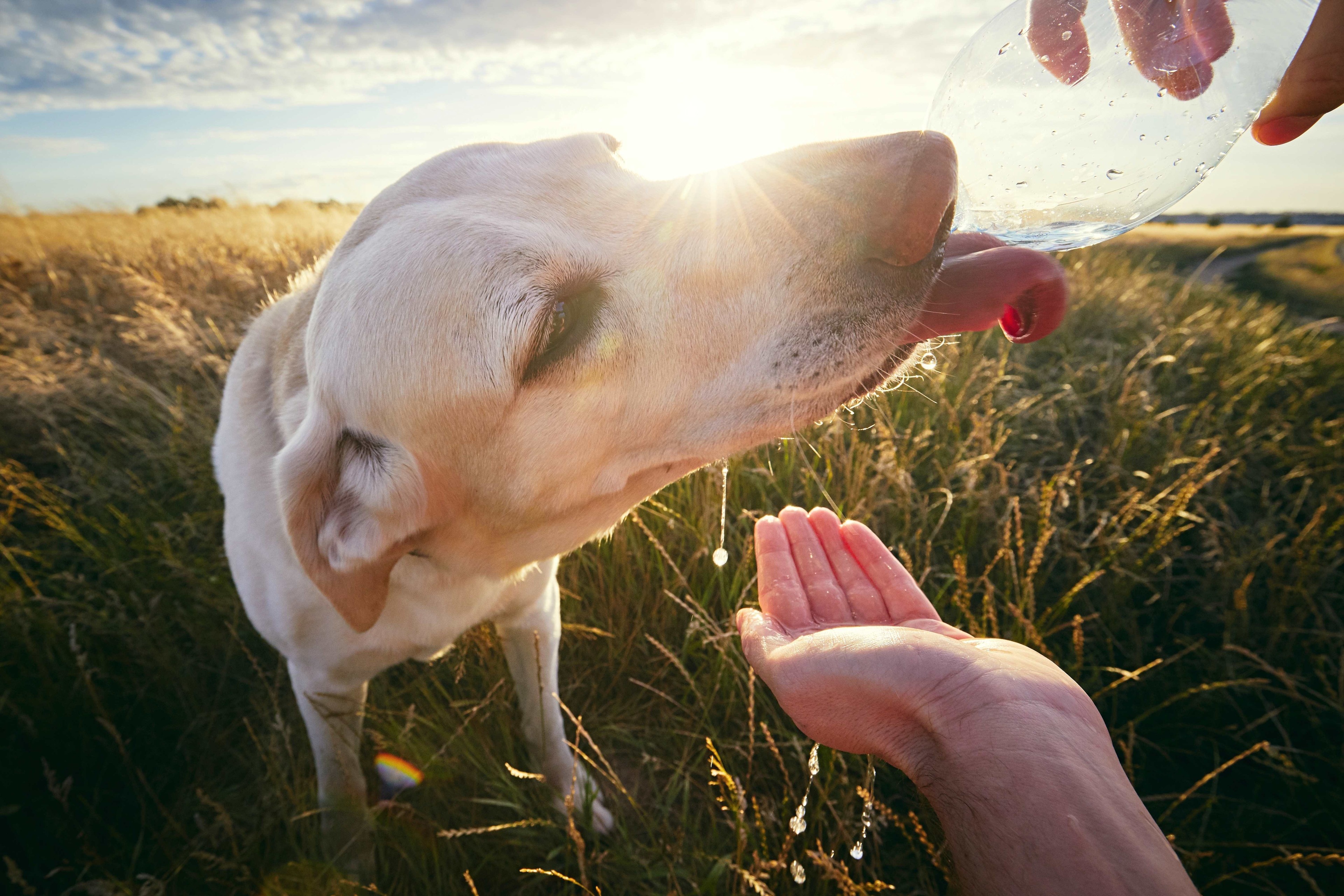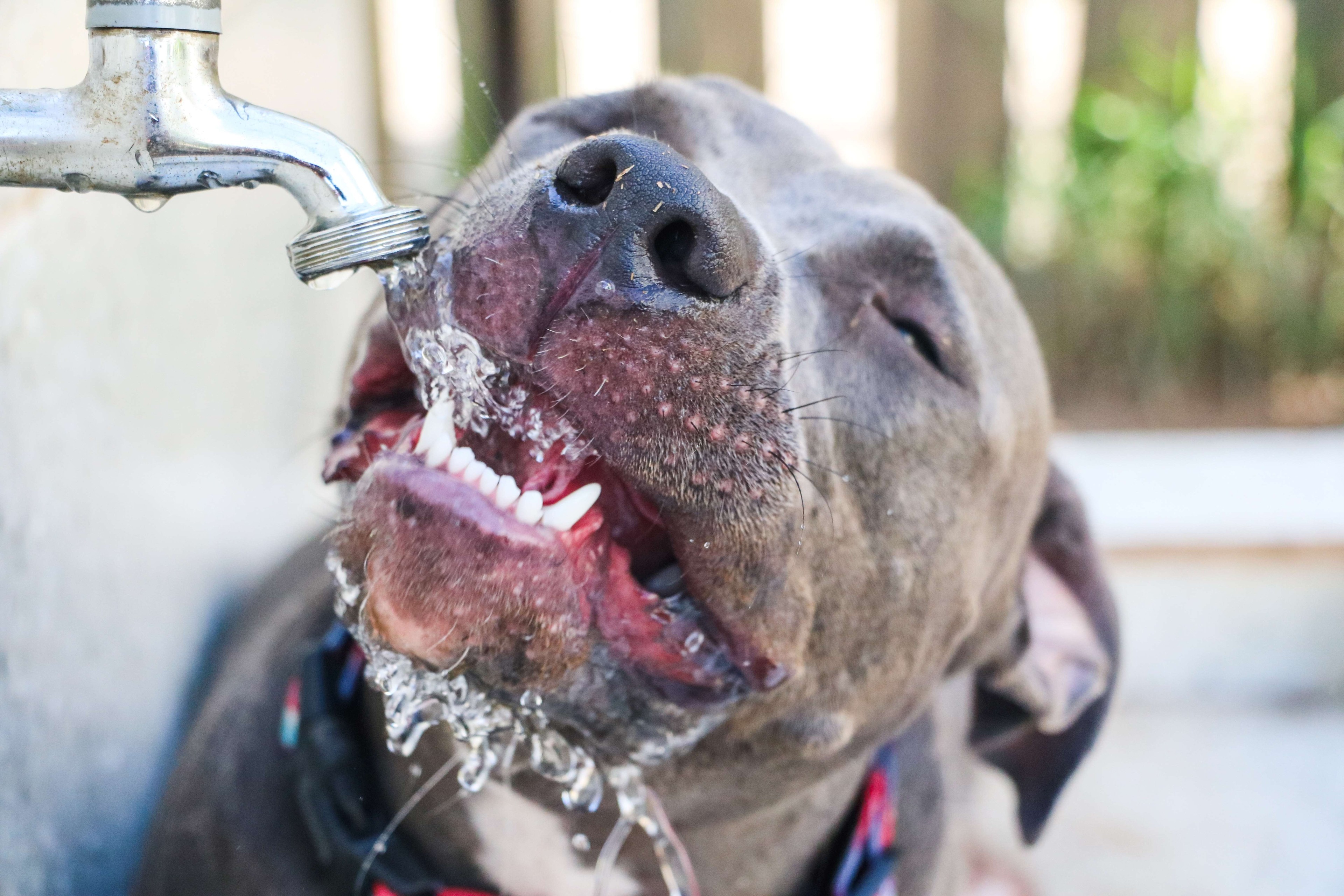No Products in the Cart
Written by Crystal Moore | Last updated 14/08/24

Like humans, dogs need water to stay hydrated. Some dogs drip water outside of their bowls, and others have half the water on the floor by the time they're done satisfying their thirst.
As you become accustomed to your dog's drinking habits, you may have noticed your dog drinking lots of water. Although there are more common causes of excessive thirst, such as warmer temperatures and exercise, sometimes there may be no visible causes, indicating that your dog could have an underlying health condition or a reaction to external factors.
It's important that you understand the potential causes of your dog drinking lots of water so that you can more accurately assess your dog's well-being and seek veterinary help if needed.
There isn't a fixed amount of water that your dog should drink a day, as it can vary depending on different factors. Your dog's size, age, activity level, medication, and weather can all have varying impacts on the amount of water your dog drinks. According to DAVIES, the normal water intake for dogs is around "20-70ml/kg body weight per day." For example, if your dog weighs 20kg, they should consume between 400ml and 1,400ml of water in a day.
As mentioned, there are external factors that can influence your dog's water intake, and it is crucial to keep these in mind if you notice your dog drinking lots of water. For instance, if your dog is highly active on a hot, sunny day, they will naturally need and drink more water to avoid dehydration and heatstroke. Taking note of all these different factors whilst monitoring the amount of water your dog consumes can help you decide whether their water intake is cause for concern.
Dogs need water to survive. They need it to help regulate their body temperature, keep them hydrated, flush out toxins, and keep their organs functioning properly. Your dog is most likely to become thirsty after a meal, exercise, or due to hot weather. Overall, dogs get thirsty for a whole array of reasons, and it's essential that your dog has access to fresh, clean water at all times.
Although ensuring your dog is drinking enough water is vital, excessive thirst can indicate something is wrong. Read the list below of potential causes of your dog drinking lots of water:

Diabetes in dogs can cause a dog to consume more water than normal due to imbalanced blood sugar levels. AVMA says, "When the blood glucose reaches a certain level, the glucose overflows into the urine and draws large volumes of water with it."
Diabetes mellitus in dogs is caused by the failure of the pancreas to regulate blood sugar. VCA states that one of "the four main symptoms of diabetes mellitus are increased thirst." Due to insufficient insulin, the glucose (energy source) cannot get to the cells, and a dog's body tries to eliminate the excess glucose by excreting it in the urine. VCA also say, "Since glucose attracts water, it increases the volume of urine produced. To avoid dehydration, the dog drinks more and more water."
Diabetes insipidus is a rare condition in dogs. MSD Veterinary Manual states that diabetes insipidus in dogs is caused by a lack of antidiuretic hormone (ADH) or an inability of the kidneys to respond to ADH. According to VCA, Diabetes insipidus is characterised by excessive thirst and drinking.
Cushing's disease in dogs, also known as hyperadrenocorticism, occurs when a dog's body produces an excessive amount of cortisol, a steroid hormone that helps regulate various bodily functions.
According to Blue Cross, one of the first symptoms of Cushing's disease that a dog owner will notice is excessive thirst and urination. The excess cortisol interferes with the normal feedback mechanisms that control thirst and fluid balance in the body. As a result, the dog's brain receives signals indicating dehydration, even when the body has enough water.
When your dog exercises, they drink more to stay hydrated and regulate their body temperature. During physical activities, your dog loses fluids through panting and sweating (through their paws). Blue Cross states that dogs "rely on panting and releasing heat through their paw pads and nose to regulate their body temperature".
To compensate for the fluid loss during exercise, your dog instinctively needs to drink more water. Drinking water helps replenish the lost fluids and maintain their body's water balance. Adequate hydration is crucial to prevent overheating and ensure the proper functioning of their organs and muscles during physical exertion.
Your dog's diet can significantly affect the amount of water they drink. The ingredients and whether the food is wet, dry, or raw all have varying effects. Diets that are rich in salt can increase your dog's thirst, therefore leading your dog to drink lots of water.
If your dog is fed a raw, wet or canned dog food diet, you may find and should expect them to drink less water than a dog fed a dry kibble diet. This is because the water content is higher in raw, wet and canned dog food, which contributes to their daily water intake and overall hydration. Simultaneously, dogs fed dry food will need to drink more water to compensate for the lack of moisture in their food.
Water is especially important for puppies and their rapidly growing bodies. You may find that a puppy drinks more water as it is a vital part in supporting the growth of their organs, tissues, and muscles. You'd have of noticed that puppies are much more active than adult and senior dogs. Their playful demeanour and explorative adventures to discover the new world around them will require them to use more energy and, in turn, drink more water.
Adult dogs generally have stable water needs and are typically only influenced by their activity levels, size, diet, and environmental conditions.
Finally, the metabolism and activity levels of senior dogs tend to decrease, leading to reduced water loss through physical activities. However, as dogs age, they may be more susceptible to health conditions such as kidney problems, which can directly affect their water intake. The results from J Vet Intern Med 2013 report stated that the prevalence of chronic kidney disease in dogs varied widely from 0.05-3.74% in the UK.
As the weather rises in temperature, your dog will drink more water in order to stay hydrated. In hotter weather, your dog's risk of dehydration or, worse, heatstroke significantly rises and unfortunately, not all dog owners are aware of how serious and easy their dog can become dehydrated very quickly. Dogs do not sweat, and in order for them to cool down, they will pant. Keep a close eye on your dog's behaviour and how much they drink water during warmer days.
On the contrary, you may find that your dog drinks less water during cold weather. But, no matter the temperature outside, always provide your dog with access to fresh, clean water.
There are certain medications that can affect your dog's water intake due to their pharmacological effects on their body, so always make sure to read the side effects and discuss them with your veterinarian if you are worried. Some medications may cause a dog to feel thirsty, which is a condition known as polydipsia. This side effect can be a direct result of the medication's impact on the brain's thirst-regulating centres or its effect on certain hormone levels.
Diuretics are commonly prescribed to dogs to manage conditions such as heart failure or kidney problems. According to VCA, the most common side effect of diuretic medication for your dog is increased urination.
Additionally, there are other medications prescribed that may cause side effects like dry mouth or nausea, increasing your dog's thirst. Some medications can affect your dog's metabolism or body temperature regulation, contributing to higher water needs.
It's essential to be vigilant about the effects of various medications and consult with your veterinarian if any concerning changes occur.
Dehydration occurs when your dog's body loses more fluids than it takes in. This can happen for various reasons, including not drinking enough water, excessive panting, vomiting, diarrhoea, or a combination of these factors. If your dog is dehydrated, it's important to address the issue promptly, as it can quickly become a severe health concern.

Dehydration can cause your dog to become lethargic and show little interest in physical activities. They may seem weak or tired, lacking their usual energy levels. Your dog needs water to maintain a healthy balance of electrolytes in their body, which is essential for proper muscle function and energy levels. If you notice a significant decrease in your dog's activity and playfulness, you should take them to the vet to get checked, as it can be a symptom of several other health conditions.
Dehydrated dogs may lose their appetite and show disinterest in food. Dog treats or meals might not entice them to eat. If this is the case, try more high-value rewarding dog treats to see if it piques their interest. A sudden loss of interest in eating can be a worrisome indicator of dehydration and other health issues. It is vital to see your veterinarian if your dog is not eating. Other than dehydration, a loss of appetite can signify other significant illnesses.
One visible sign of dehydration is the appearance of sunken eyes. Dehydrated dogs may have eyes that look recessed or appear sunken into their eye sockets. This occurs due to the loss of fluid throughout the body, including the tissues around the eyes. The dog's body will try to conserve water by pulling it from other areas, such as the eyes.
A dehydrated dog may exhibit a dry and sticky mouth. You may notice their gums and tongue appearing dry, and their saliva may be thick and rope-like. Dehydration affects the production of saliva, leading to these dry mouth symptoms.
In addition to a dry mouth, dehydrated dogs might have thick and sticky saliva. This type of saliva is rope-like rather than thin and watery. This change in saliva consistency is related to reduced fluid intake and the body's attempt to conserve water.
If you have spoken with you're veterinarian, and it has been found that your dog does not have any health conditions, but you're still having trouble getting your dog to drink enough water, there are a few things you can try:
Keep the water bowl clean and filled with fresh-cool water.
Make sure the water bowl is easily accessible.
Offer water in a different bowl or location to make it more appealing.
Add water to your dog's food to increase their water intake.
Consider using a dog water fountain.
When out, bring a dog water bottle for hydration on the go.

It's important to pay attention to the amount of water your dog drinks on a daily basis to make it easier to spot if your dog is drinking too much or too little water.
Whilst it's important to ensure your dog stays hydrated, drinking too much water can be a sign that something is wrong. By keeping an eye on your dog's behaviour and water consumption, you can help ensure that they stay healthy and happy. If you notice any changes in their drinking habits, consult your veterinarian to rule out any underlying health issues. Remember, prevention and early detection are key when it comes to your dog's health. Additionally, ensure you have good pet insurance, as you never know when a minor or major problem could occur with your beloved four-legged friend.
If your dog is drinking lots of water and shows other symptoms such as frequent urination, lethargy, or changes in appetite or behaviour, it could be a sign of an underlying health issue. If you are concerned, it's best to consult with your veterinarian.
As dogs age, they may develop health conditions that can directly affect the amount of water they consume. For example, older dogs are more prone to developing kidney disease, which can cause increased thirst and urination. Additionally, some medications commonly prescribed for senior dogs can cause increased thirst as a side effect. If you notice that your older dog is drinking lots more water than usual, it's best to consult with your veterinarian to rule out any underlying health issues.

